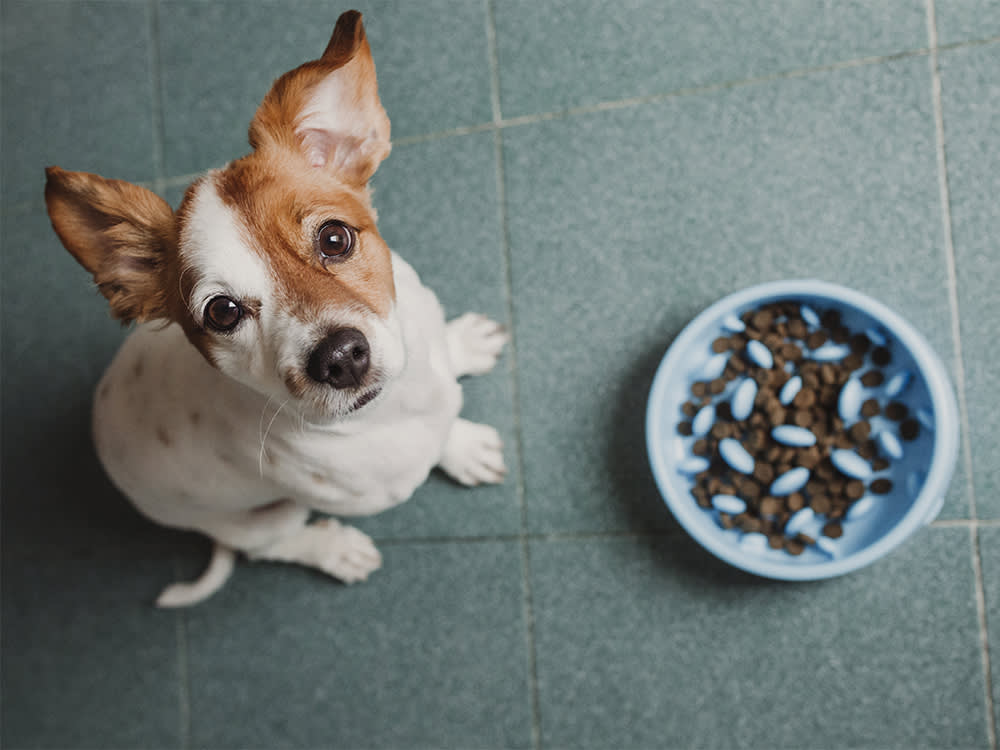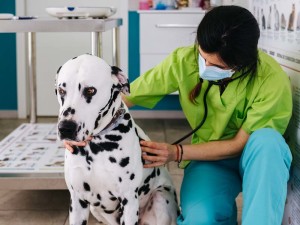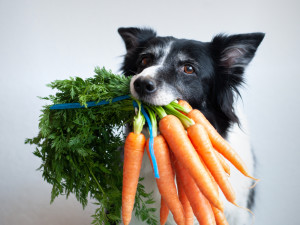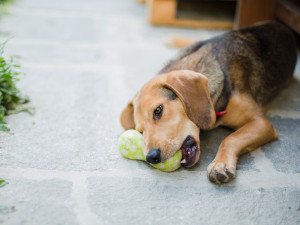Tips to Slow Down a Dog Who Eats Too Fast
Eating fast is more than just unsightly – it’s potentially dangerous
Some dogs eat so fast that it looks like they’ve never seen food before. Many dogs speed eat through their lives without a problem – but they are flirting with disaster.
Eating so quickly doesn’t allow dogs to chew or even really taste their food. More worrisome is that a dog speed eating can cause choking, gagging, vomiting and an even more serious condition called gastric dilation (colloquially known as bloat).
Canine bloat can result from a dog eating too much or too fast. The stomach expands as gasses build up to the point that the stomach can twist within the dog’s abdomen, preventing the gasses from escaping.
The result: circulation can be cut off to the stomach as well as to other organs including the heart. Dogs can die within hours of the onset of bloat, so it’s a serious condition that requires immediate emergency medical attention if you suspect it.
The bottom line? Eating fast is more than just unsightly – it’s potentially dangerous.
How to slow down a dog who eats too fast
I am regularly asked how to train a dog to eat more slowly, and my answer is that it’s easier to make it physically impossible for them to eat fast than it is to train them to eat slowly. There are a lot of ways to do this, but they all use the same principle: set up a system that doesn’t allow them to eat more than a small amount of food at a time.
There are a lot of commercial options out there for slow-feed dog bowls, but let’s start with a DIY slow-eating dog bowl solution: place one small bowl upside down inside a bigger bowl, then pour the food over the small bowl and into the bigger one. This creates a narrow ‘moat’ of food so your dog can’t gulp the entire meal down in one – they have to work their way around the circle of food.
Another option is to place toys that are too big to swallow (and that are clean) in a food bowl so that the dog has to move them out of the way or work around them to reach the food.
It’s also common for people with dogs who eat too fast to scatter the food over a wider area so the dog has to move around for each piece of food. This might work very well in houses with a single dog, but if more than one dog is around, this option isn‘t a good choice as it can promote competition, stress and can lead to food aggression.
My favourite way to keep dogs from wolfing down their food too quickly is to use a dog food puzzle or slow-feeder dog bowl. Food puzzles are often loud, but many dogs will work for a long time to roll or push something like a Kong Wobbler around to get the food to fall out.
Some people even use snuffle mats for fast eaters. Not only does this slow down their eating, but it also provides mental exercise and gives dogs valuable experience being persistent and handling a bit of frustration. Never a bad thing, right?
Slow-feed dog bowls picks
Dog bowls labelled ‘slow feed’ help dogs change the pace of their eating. Discouraging dogs from gulping food down quickly has many benefits, including improved digestion, and helping to prevent vomiting and gastric bloat. If a slow feeder dog bowl is more your speed, there are many options to choose from, too.






